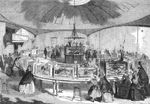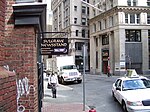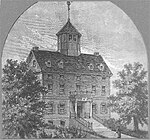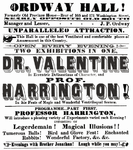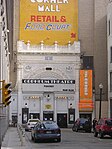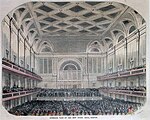Pendleton's Lithography
1820s in the United States1830s in the United States1836 disestablishments19th-century lithographers19th century in Boston ... and 6 more
American lithographersAmerican printmakersCultural history of BostonEconomic history of BostonFinancial District, BostonManufacturing companies established in 1825

Pendleton's Lithography (1825–1836) was a lithographic print studio in 19th-century Boston, Massachusetts, established by brothers William S. Pendleton (1795-1879) and John B. Pendleton (1798-1866). Though relatively short-lived, in its time the firm was prolific, printing portraits, landscape views, sheet music covers, and numerous other illustrations. The Pendleton's work might be characterized by its generosity—each print contains a maxima of visual information designed for graphic reproduction.
Excerpt from the Wikipedia article Pendleton's Lithography (License: CC BY-SA 3.0, Authors, Images).Pendleton's Lithography
Washington Street, Boston Downtown Boston
Geographical coordinates (GPS) Address Nearby Places Show on map
Geographical coordinates (GPS)
| Latitude | Longitude |
|---|---|
| N 42.356227777778 ° | E -71.059913888889 ° |
Address
Washington Street 387
02108 Boston, Downtown Boston
Massachusetts, United States
Open on Google Maps




